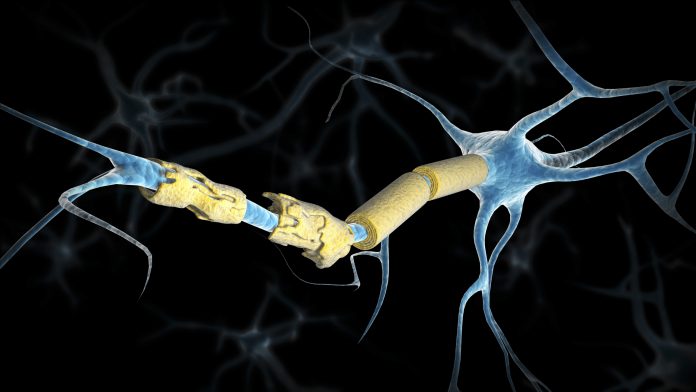
In a new study, researchers at the University of California, San Francisco (UCSF), say they have discovered that a known biomarker for nerve damage can predict a worsening of disability in multiple sclerosis (MS) patients, one to two years before it occurs.
MS is an immune-mediated disease of the central nervous system, in which the body’s own immune system attacks the protective protein, called myelin, around nerve cells. Once the myelin sheaths are damaged, the underlying nerve fibers are permanently impaired and can eventually die. Patients can experience a wide range of neurological problems and may lose the ability to walk.
In the United States, nearly one million people live with MS. To date, there is no cure, but a number of treatments can aid in the management of symptoms and help patients recover from an attack.
The severity of the condition and the fact that it is uncurable has led researchers to examine the disease progression in more detail. In a 2020 study, researchers at the Karolinska Institutet in Stockholm, Sweden, observed that patients with increased levels of neurofilament light chain (NfL) protein in the early stages of MS had an increased risk of disability worsening as the condition progressed.
When nerve cells die, NfL is released into the blood, which makes it a biomarker for neurological disorders, like MS. Based on this knowledge, the researchers at UCSF—supported by the University Hospital and the University of Basel, Switzerland—set out to discover the exact timeframe in which the worsening of disability in MS patients might be predicted.
In the study published in JAMA Neurology and titled, “Neurofilament Light Chain Elevation and Disability Progression in Multiple Sclerosis,” the researchers scanned data over a 10-year period that included almost 1,900 MS patients, of which 570 patients had a disability that continuously worsened.
The result: Increased levels of NfL were associated with an up to 91% higher risk that disability would worsen a year later. These patients were also suffering from relapses, which means an exacerbation of old symptoms or the appearance of new symptoms. Patients, who did not suffer relapses, had a 49% higher risk of a worsening of disability occuring within two years.
“We think that NfL elevation occurs earlier in disability worsening without relapse,” Ahmed Adbelhak, MD, co-first author and researcher at the UCSF department of neurology and the Weill Institute of Neurosciences, explained in a press release. “This rising of NfL up to two years before signs of disability worsening, represents the window when interventions may prevent worsening.”
Based on the study’s result, physicians could use NfL as a biomarker to start treatments before a worsening of disability occurs in MS patients.
“Monitoring NfL levels might [allow us] to detect disease activity with higher sensitivity than clinical exam or conventional imaging,” added Jens Kuhle, MD, PhD, co-senior author and head of the Multiple Sclerosis Center at University Hospital and University Basel.
The researchers now want to take a closer look at potential therapies that can stop the progression of MS during periods of increased NfL levels.











